Origins of the Rindo Family
as researched by Neil Christianson
John Richard Rindo
b. 1933 - Superior, WI
d. 2015 - Altoona, WI
Stephen Aloysius Rindo
b. 1901 - Superior, WI
d. 1961 - Superior, WI
Mary K Galik
Stephen Rindo
b. 1870 - ?
d. 1880 - Superior, WI
Rose Fulajtar
b. 1869 - ?
d. 1847 - Superior, WI
John Paulus Galik
Anna Jurasko
 A view of the coke ovens at the Lehigh Coal & Iron Co., photographed in 1890 Wisconsin Historical Society
A view of the coke ovens at the Lehigh Coal & Iron Co., photographed in 1890 Wisconsin Historical Society
Turning Back the Clock
Between 1870 and 1920, over one million Hungarians immigrated to the United States. As The Industrial Revolution slowed emigration from western Europe, booming industries in the New World sought an influx of cheap labor. Recruiters shifted their attention to northern, southern, and central Europe, with Hungary a major focus. John Richard Rindo’s grandparents, Stephen Rindo and Rose Fulajtar, immigrated in this wave. To illustrate how I came to a conclusion of their origins, I’ll review the evidence in the order it connected.
The censuses of the late nineteenth and early twentieth centuries are a valuable resource for this subject. In addition to countries of birth, some also list key dates in the immigration process and often show communities re-establishing themselves in the United States. The 1920 Census records Stephen Rindo and Rose with their children Sofia, Stephen, Josephine, Helen, and Johnie at a home they own at 1902 Maryland Avenue in Superior. According to this census, Stephen and Rose were born in Hungary around 1871 and 1870, respectively, and immigrated in 1890.
In 1910, the family lives at 225 Lehigh Road, near the lakeside operations of the Lehigh Coal & Iron Co. Stephen works on the coal dock, and the families of coal workers fill three census pages. Stephen’s immigration date now shows 1888, and Rose’s 1891. Dates closer to an event tended to be more accurate, so this ealier census provides important informationStephen and Rose immigrated independently and may not have had the same origin.
In 1900, the Rindos are on land company property near Standard Oil, and Stephen is a “coal heaver.” Stephen Rendo, Rosie F., and their five children are hosting a relative and eight Hungarian boarders, all laborers at the dock. The 1890 Census, which would have been Stephen’s first, was almost entirely destroyed in a fire. Fortunately, Wisconsin was taking its own around that time.
In the 1905 Wisconsin Census, Steve Rienda and
Mrs. live with children Mary, 13, Rose, 12, Irene, 10, Annie, 8, Sofie, 6, Steve, 4, and Joe, 2. Setting a precedent for the young Steve Aloysius, Stephen is a fireman. With the family this time are five Hungarian boarders, none of whom also lived with them in 1900. It was common for established families to host their compatriots as they transitioned into the country, and it appears the Rindo family embraced this role.
The 1895 Wisconsin Census lists only the heads of household by name, with the rest of the family enumerated by gender and nativity. Using the children’s ages from 1905, the family at that time would be the couple with Mary, Rosie, and possibly Irene, born that year. Stephen Renda lives in Superior with four female family members. Two in the household were born in the United States and three in Hungary. The third born in Hungary could either be an error by the census taker or a relative living with them. Locations and birth and immigration dates gathered from these censuses allowed the search to continue.
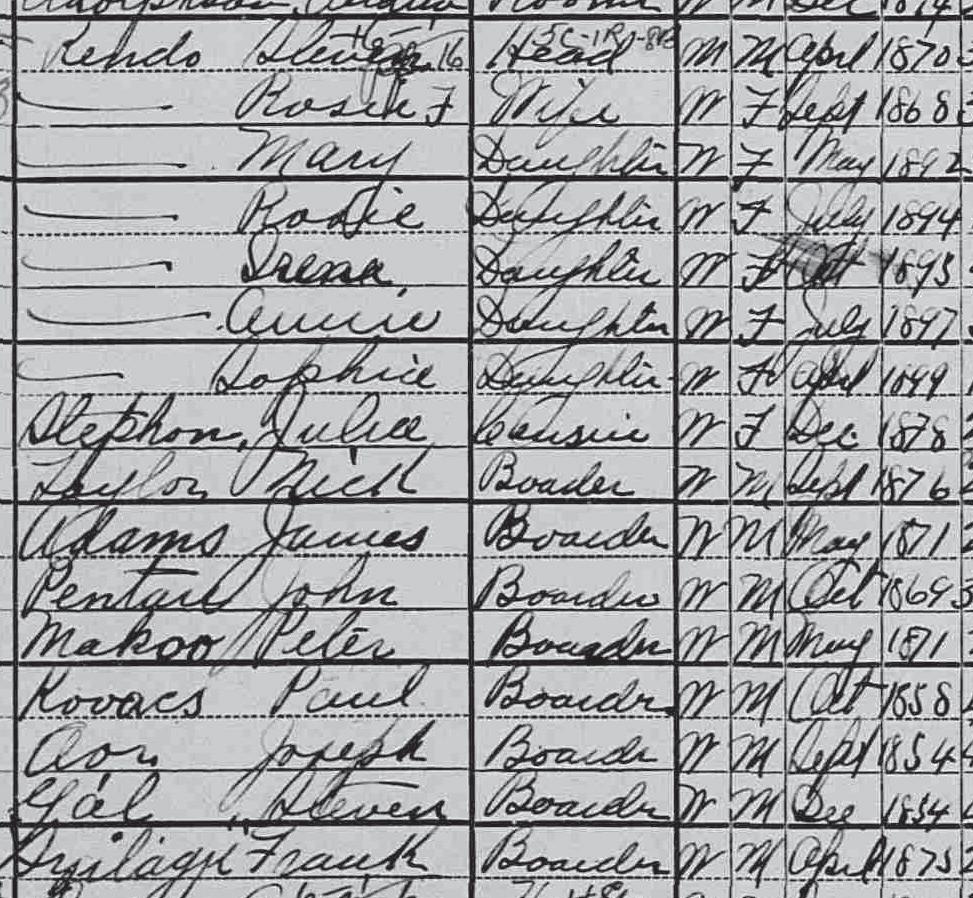 The Rindo household on the 1900 United States Census
The Rindo household on the 1900 United States Census
The Immigration Journey
After 1819, the captains of arriving immigrant ships were required to produce a manifest of passengers and their demographics, usually the first written record of an immigrant on this side of the Atlantic. Two years into their stay, they could begin the years-long naturalization process. Citizenship was required for homestead grants and other rights and was therefore appealing to family patriarchs and their adult sons. At this time, married women naturalized through their husbands.
After living in country for two years and the state they intended to settle for one, immigrants could file a Declaration of Intention, formalizing their intent to renounce all ties to their former country and become citizens of the United States. These documents, if not more specific, listed the country of birth and the date and port of arrival. The Douglas County natrualization indexes record Stephen’s Declaration, submitted in Superior on August 26, 1897.
After another wait, they could submit a Petition for Naturalization and, once admitted, be issued a
Certificate of Naturalization. Stephen’s Certificate was issued November 2, 1900. Though the records, themselves, exist in gaps in the digitized archive, an INS card index retains key information - his arrival at the Port of New York in December 1888. At this time, immigrants arriving in New York landed at Castle Garden. Searching their passenger manifests for that month revealed his immigration journey.
On December 28, 1888, a seventeen-year-old Stephen Rindo first set eyes on the United States. Appearing on the mainfest as Stefan Rinda, he and 169 others from central Europe made the twentyone-day crossing from Hamburg, Germany on the SS Taormina. This would have followed an already lengthy trek by foot, cart, and train from his home in Hungary to the port in Hamburg. Unfortunately, the manifest for the Taormina does not get more detailed than the country of origin. Finding the precise start of Stephen’s journey meant piecing together other clues.

left: INS card index for the naturalization of Stephen Rindo
below: Stephen Rindo, on the passenger list for the Hamburg Line’s SS Taormina
right top: European Emigration to the United States, Contributing Districts, Collecting Points, and Routes Followed, 1900 by M.V. Stafford
Stephen Rindo’s assumed emigration route added by the author
right bottom: SS Taormina arriving to awaiting emigrants in Hamburg
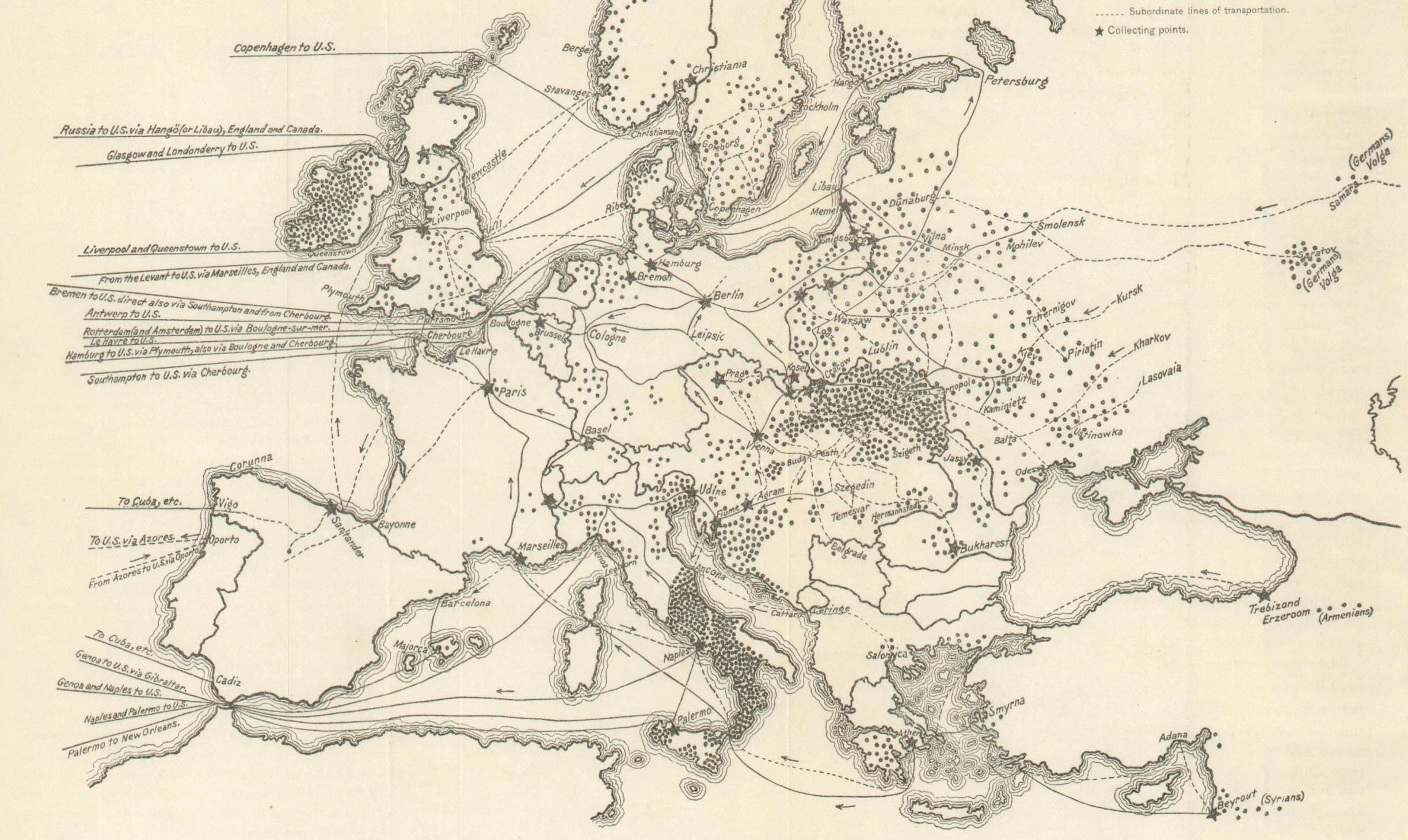
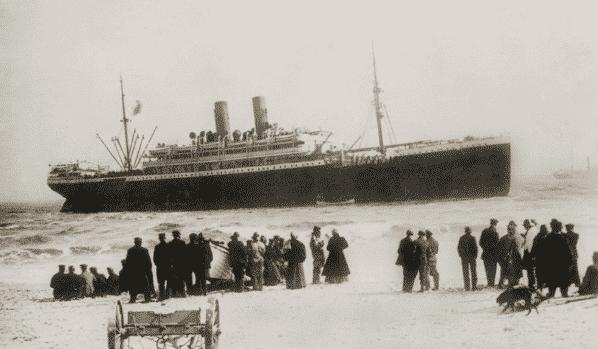


 Map of Ung County, Hungary - 1910
details from Julianna Stofan on the passenger list for the ship Southwark in 1900
Map of Ung County, Hungary - 1910
details from Julianna Stofan on the passenger list for the ship Southwark in 1900
The Case for Nagykapos
Rose Fulajtar’s death certificate, according to a note on her Find a Grave® memorial page, lists her birthplace as “Nyakopas.” The author noted that they could not find a matching location in Hungary. After some digging, I found a match in an unexpected place - present-day Slovakia.
World War I brought an end to the AustroHungarian Empire with the dissolution of the dual monarchy in 1918. Between former provinces defecting to the Allied powers and the forced cessions of the Peace of Paris in 1920, Hungary lost two-thirds of its former kingdom to neighboring countries. The turbulent period that followed left these locatlities with many names. Nagykapos is the Hungarian name for the Slovakian town of Veľké Kapušany. Traditionally in Hungary’s Ung county, Velké Kapušany now sits near the Hungarian border in the Slovakian district of Michalovce. This may solve the mystery of Rose’s origin, but she and Stephen immigrated independently. Although it appears there were strong community ties between Hungarians in the US, I did not initially have evidence suggesting the same origin for Stephen.
This changed when I was searching for Stephen’s immigration and naturalization records. The search turned up the naturalization of a John Rindo, living in Superior in 1922. John was born in 1864, within the range to be a brother or cousin of Stephen. His last residence in Hungary was “Welke Kapusany,” the spelling owing to the substitution of w’s for v’s common for that period. This was the first record I found linking the Rindo name to Nagykapos.
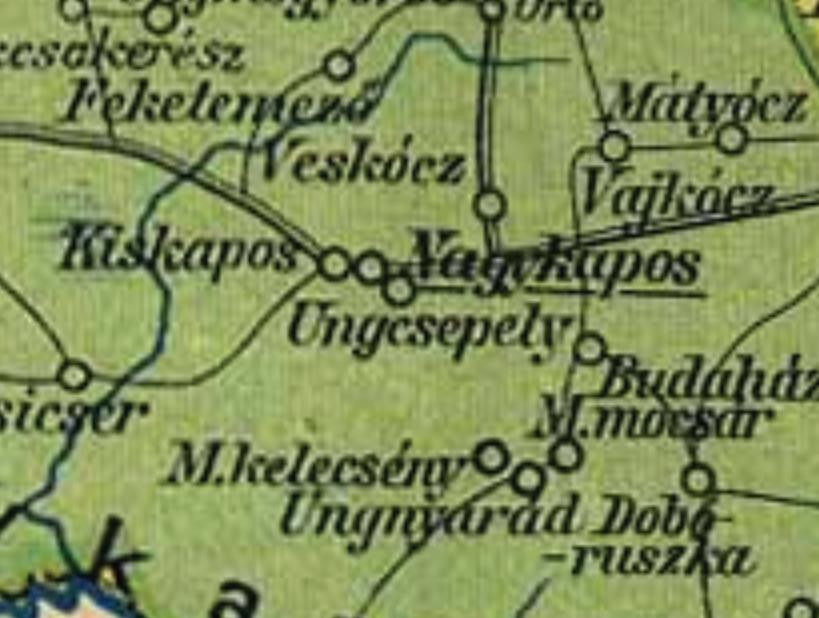
The evidence grew with the immigration of a Julianna Stofan in 1900. Julianna was from Nagykapos in Hungary, and her destination was her uncle Stefan Rynda in West Superior, Wisconsin. Julianna made it to the Rindo family in time for the 1900 Census, listed in their household as Stephen’s cousin Julia Stephon.
During my search, I came across a list of surnames taken from a 2005 Velké Kapušany phone book. This list includes nine individuals still going by the name Rindo. Browsing the lists from neighboring towns did not produce the name once.
These were all promising, but not yet conclusive to this evidence-based genealogist. After all of these findings and writing the above, I finally found what I was looking for in a class of documents I hadn’t previously explored. Just as immigrants were recorded entering the United States, they were also recorded at their departure. The arrival date of the SS Taormina led me to its departing manifest from December 7, 1888 in Hamburg. Stefan Rinda is listed along with his place of origin, Kapos, Ungarn. “Ungarn” is “Hungary” in German. In older records, Nagykapos was sometimes spelled “Nagy-Kapos,” with the prefix “nagy” translating to “large.” As European towns and villages grew around one another, their names tended to differentiate. This often lead to the adpotion of modifiers like large and small, east and west, or upper and lower. Neighboring Nagykapos on the 1910 map is its counterpart, Kiskapos or “small” Kapos, both incoporated into the presentday Velké Kapušany.
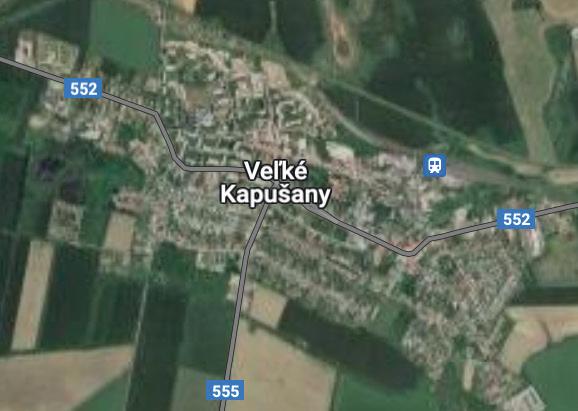 Enlarged view of the 1910 Ung Map
Velké Kapušany in the present day
Enlarged view of the 1910 Ung Map
Velké Kapušany in the present day
Notes and Other Connections
I will conclude with a few comments and curiosities that arose during the research, beginning with a quick note on spelling. Although many families altered their surnames or adopted new ones upon entering the United States, the spelling of names on these documents must be taken with a heap of salt. It relied entirely on an interpretation of a verbal response and depended on the biases of the record-taker and their own native language, leading to endless spelling variations. The Rindo family name is the perfect example of this, with a handful of spellings even in the few documents presented here.
A missing piece of the puzzle is the gap from their separate immigrations to their living in Superior at the 1895 Wisconsin Census. It was common for families to break up the journey to their final destination and live for short periods somewhere along the route. There is some evidence of this for Stephen and Rose. According to the 1900 and 1905 censuses, their eldest, Mary, was born in Michigan. This is sheds some light on the nature of their trek west, most likely following waterways and the Great Lakes from New York to the port of Detroit. It also proves the couple got together between immigrating and arriving in Wisconsin. That Mary was born in 1892 suggests the couple was paired soon after Rose’s 1891 immigration. It is possible they were already an item as teenagers in Hungary. Stephen may have spent his first two years in country waiting for Rose to meet him, either in New York or Michigan.
Another curiosity is their marriage. Stephen and Rose married in 1903 in Cuyahoga County, Ohio. This was long after they started their family, which was uncommon but not unheard of for the time. More perplexing is the location, but that, too, has started to make sense. Superior was not the initial destination of the John Rindo that naturalized there in 1922. The manifest from his arrival noted his destination as his stepbrother in Cleveland, Ohio. Researching in this area was illuminating. During this same period, around sixty men from Nagykapos naturalized in the Cuyahoga County. These likely
represent only a fraction of family patriarchs, suggesting hundreds of immigrants from Nagykapos may have re-established their community in the Cleveland area. We can now imagine the joyous occasion as Stephen and Rose finally made a voyage to Ohio to be married among friends and family from their home in Hungary.
A record that may provide additional evidence is Stephen’s death certificate. This record may include his place of birth as it did for Rosie and possibly also his date of birth. Descendants are able to purchase copies of an ancestor’s vital records for a small fee from the county’s Register of Deeds.
The next step I would usually take is to locate the couple in church and civil records for Velké Kapušany, but these are not as accessible as others in Hungary or Slovakia. Many of the records for Ung County are still held in its former seat, called “Unvar” on the 1910 map and Uzhhorod today. Though just ten miles from Velké Kapušany, Uzhhorod is now in Ukraine. As a consequence, not all of these were included in the archiving efforts of the two other countries. There is a small group dedicated to digitizing these records, but this project was still in the early stages in 2023.
Even so, I was able to locate a collection of some of the regional church records in a Slovakian archive. Within is a possible match for Stephen’s birth and parentage. On February 10, 1863, a Johannes Hrinda and Elizabeth Stofán were married in Kiskapos. They had a daughter Elizabeth in 1868 and baptized a son Istvan on April 6, 1870. This is a convincing match, as Julianna Stofan’s immigration listed Stephen Rindo as her uncle. The spelling of given names depended on the language of the record - Johannes/János for John, Elizabeth/Ersébet, and Stephanus/Istvan for Stephen. In this period, surname spelling also varied between sources. The variants Hrinda, Hrindo, and Rindo are all still in use today.
Timeline of Sources
1863
February 10 - Marriage of Johannes Hrinda and Elizabeth Stofán - Kapos
https://www.familysearch.org/ark:/61903/3:1:S3HY-DT7S-NGV
1870
April 6 - Baptism of Istvan Hrinda to János Hrinda and Ersébet Stofán
https://www.familysearch.org/ark:/61903/1:1:V13F-F4F
1888
December 7 - Stephen Rindo’s departing passenger manifest for the SS Taormina - Hamburg
https://www.ancestry.com/discoveryui-content/view/3046860:1068
December 28 - Stephen Rindo’s arriving passenger manifest for the SS Taormina - New York
https://www.familysearch.org/ark:/61903/1:1:QVSL-DVPV
1895
1895 Wisconsin Census - Superior, WI
https://www.familysearch.org/ark:/61903/1:1:MM9C-D2X
1897
August 26 - Index record for Stephen Rindo’s Declaration of Intention - Superior, WI
https://www.familysearch.org/ark:/61903/3:1:3QSQ-G938-19H9?i=46
April 11 - Janos Rindo’s arriving passenger manifest for the Crefeld - Philadelphia, PA
Manifest: https://www.familysearch.org/ark:/61903/1:1:23Q6-JWC
Index: https://www.familysearch.org/ark:/61903/1:1:KFDP-MT4
1900
1900 US Census - Superior, WI
https://www.familysearch.org/ark:/61903/1:1:MMK6-JVR
Julianna Stofan’s arriving passenger manifest for the Southwark - New York
https://www.familysearch.org/ark:/61903/1:1:QGP3-L1VY
2 November - Indexes for Stephen Rindo’s Certificate of Naturalization - Superior, WI
https://www.familysearch.org/ark:/61903/1:1:ZVM8-6MZM
https://www.familysearch.org/ark:/61903/1:1:8HRZ-8Z3Z
1903
February 16, Marriage of Stephen Rindo and Rose Fulajtar, Cuyahoga County, Ohio
https://www.familysearch.org/ark:/61903/1:1:ZZ5T-TLZM
1905
Wisconsin Census - Superior, WI
https://www.familysearch.org/ark:/61903/1:1:MMSY-1TQ
1910
1910 US Census - Superior, WI
https://www.familysearch.org/ark:/61903/1:1:MPKF-PWT
1920
1920 US Census - Superior, WI
https://www.familysearch.org/ark:/61903/1:1:MF2M-1SQ
1922
October 20 - John Rindo’s Declaration of Intention - Superior, WI
https://www.familysearch.org/ark:/61903/1:1:6XK5-LKF3
2005
Phone book surnames list - Velké Kapušany
https://www.cisarik.com/0_Velke_Kapusany_Michalovce_KI_Ung_Uzhorod.html#more_surnames
 A view of the coke ovens at the Lehigh Coal & Iron Co., photographed in 1890 Wisconsin Historical Society
A view of the coke ovens at the Lehigh Coal & Iron Co., photographed in 1890 Wisconsin Historical Society

 The Rindo household on the 1900 United States Census
The Rindo household on the 1900 United States Census





 Map of Ung County, Hungary - 1910
details from Julianna Stofan on the passenger list for the ship Southwark in 1900
Map of Ung County, Hungary - 1910
details from Julianna Stofan on the passenger list for the ship Southwark in 1900

 Enlarged view of the 1910 Ung Map
Velké Kapušany in the present day
Enlarged view of the 1910 Ung Map
Velké Kapušany in the present day